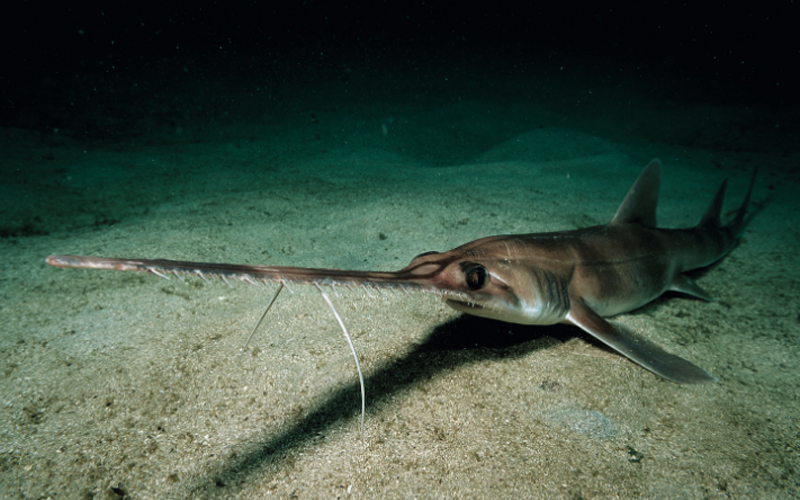Longnose sawshark
(Pristiophorus cirratus)

Classification
General data
The longnose sawshark has a slender, slightly flattened body with a very long rostrum that can make up to 30% of its total body length.
It has pale yellow or grayish-brown dorsal coloring, white ventral coloring, and variegated, sometimes faint dark blotches, spots, and bars on its back.
The barbels of the longnose sawshark are halfway down the rostrum, but slightly closer to the rostral tip than the nostrils.
Its maximum length is 1.37 m (4 ft 6 in).
The longnose sawshark can be confused with one of many species of sawfish, a family of rays, but is distinguished by the five gills located on the sides of its head, as opposed to sawfish which have gills located on the underside of the head.
Distribution and habitat
The longnose sawshark is found in the eastern Indian Ocean around southern Australia and Tasmania on the continental shelf at depths of 20 - 600m. While it may venture into bays and estuaries on occasion, longnose sawsharks prefer sandy and gravelly areas offshore between 37–146 m (121–479 ft).
Biology and ecology
Longnose sawsharks feed primarily on small crustaceans. Individuals find prey by running their barbels over the ocean floor. They use the teeth on their snouts to stir up sediment and strike prey.
Like all sawsharks, reproduction is ovoviviparous. Longnose sawsharks give birth every other winter to between 6 and 19 pups in a litter. After a 12-month gestation period, pups are born 27–37 cm (11–15 in) in length. Their teeth are folded against the snout at birth, which protects the mother from harm. Longnose sawsharks are highly productive in comparison to other shark species, maturing quickly and only living for around 15 years.











